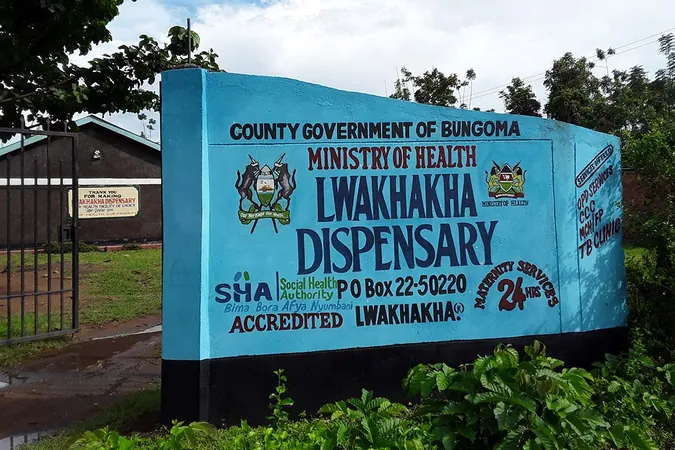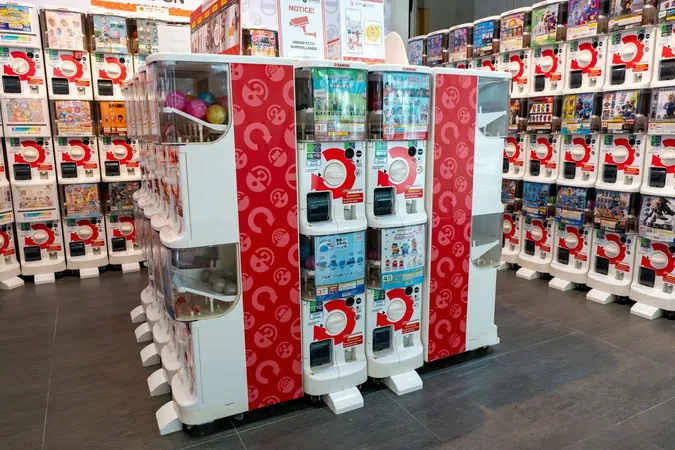
Kenya's Bold Battle Against Polio: The High-Tech & Human Element
2025-06-04
Author: Wei
A Personal Story of Resilience
In the heart of western Kenya, Joyce Nakhumicha's life took a dramatic turn during the early 1980s. Born healthy in 1977, Joyce suddenly fell ill, her parents initially attributing her struggle to malaria. Yet her aunt suspected something far more insidious: polio. Her journey led her to Alupe Hospital, where she was diagnosed with poliomyelitis and began a arduous rehabilitation process. Despite medical efforts, she was left permanently paralyzed from the knees down, a poignant reminder of polio's devastating impact.
A Landscape of Vulnerability
Bungoma County, where Joyce grew up, sits perilously close to Uganda, a region historically exposed to polio outbreaks. In the 1980s, vaccines were erratic in Kenya, leaving many, including Joyce, vulnerable. Fortunately, the tide began to turn in 1980 with the establishment of the Kenya Expanded Programme on Immunization (KEPI), leading to a significant rise in vaccination coverage by 1990.
The Global War on Polio
Fast forward to today, and the landscape has changed significantly due to mass vaccination. Wild polio is now endemic only in Afghanistan and Pakistan, but outbreaks can still spark anywhere, reminding us that vigilance and high immunization rates are crucial.
Combating the Variant Strain
Despite being polio-free, Kenya faces new challenges, including the circulating vaccine-derived poliovirus type 2 (cVDPV2), particularly prevalent in areas with lower vaccination rates. Dr. Kebba Touray from the WHO highlights the importance of strong surveillance and high vaccination coverage in keeping the country safe from potential outbreaks.
Living on the Edge: Porous Borders and Health Risks
The borders between Kenya and neighboring countries pose significant challenges to disease control. Vigilance becomes even more critical as the region grapples with the influx of people crossing borders, often undetected. In response to outbreaks, enhanced surveillance and immunization efforts are vital to safeguarding public health.
Technological Innovations in Health
Kenya has taken a multifaceted approach in its fight against polio by integrating high-tech tools into its public health strategies. Geographic Information Systems (GIS) are now employed to identify areas with low vaccination coverage and track disease patterns. Furthermore, environmental surveillance that tests sewage for the polio virus acts as an early warning system for possible outbreaks.
Modern Solutions for Modern Problems
Mobile technology is transforming polio vaccination strategies, streamlining payment processes for frontline workers and improving overall efficiency. Instant payments via mobile wallets not only bolster morale among health workers but also minimize the risk of fraud and operational hiccups.
A Community Effort
Kenya and Uganda have forged a partnership to conduct synchronized cross-border vaccination campaigns to bolster immunity in at-risk populations. By employing both traditional and innovative methods, health authorities aim to ensure that no child falls prey to the devastating effects of polio.
The Ongoing Commitment to End Polio
Kenya's journey to eradicate polio is far from over. The landscape is continually evolving, and the commitment of health workers, fueled by technology and community collaboration, remains crucial. With continued vigilance and innovation, Kenya endeavors to keep polio at bay, protecting future generations from the fate endured by Joyce Nakhumicha.




 Brasil (PT)
Brasil (PT)
 Canada (EN)
Canada (EN)
 Chile (ES)
Chile (ES)
 Česko (CS)
Česko (CS)
 대한민국 (KO)
대한민국 (KO)
 España (ES)
España (ES)
 France (FR)
France (FR)
 Hong Kong (EN)
Hong Kong (EN)
 Italia (IT)
Italia (IT)
 日本 (JA)
日本 (JA)
 Magyarország (HU)
Magyarország (HU)
 Norge (NO)
Norge (NO)
 Polska (PL)
Polska (PL)
 Schweiz (DE)
Schweiz (DE)
 Singapore (EN)
Singapore (EN)
 Sverige (SV)
Sverige (SV)
 Suomi (FI)
Suomi (FI)
 Türkiye (TR)
Türkiye (TR)
 الإمارات العربية المتحدة (AR)
الإمارات العربية المتحدة (AR)